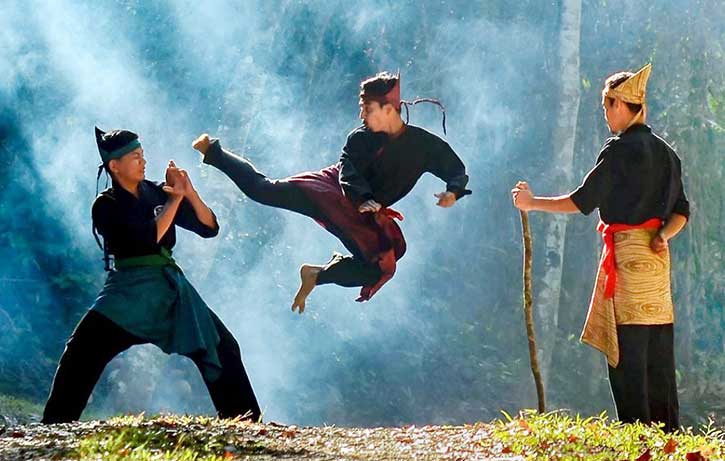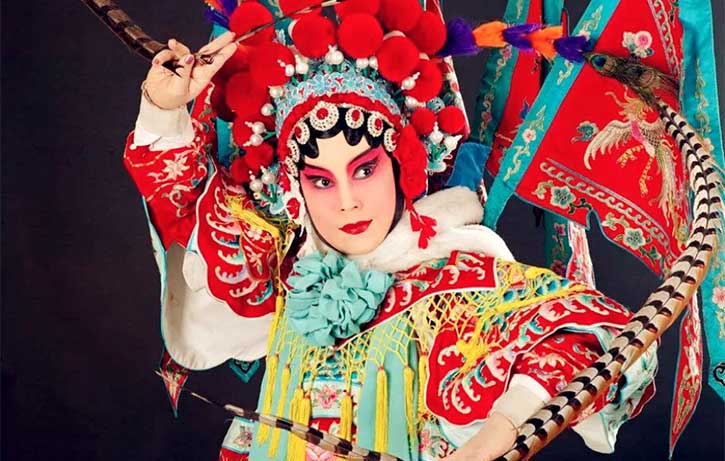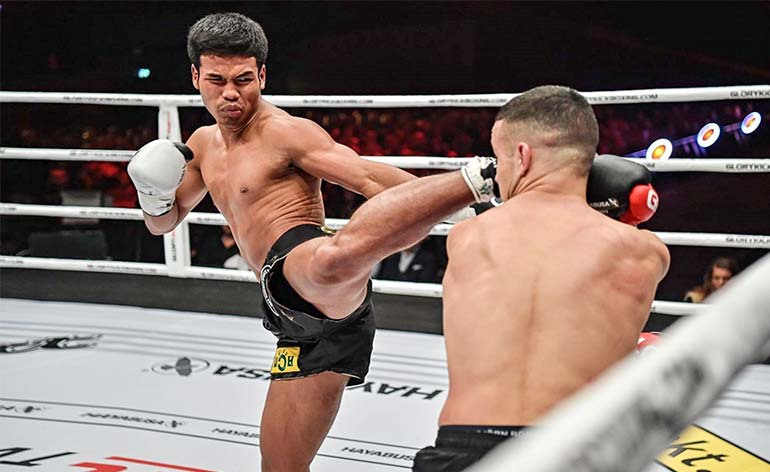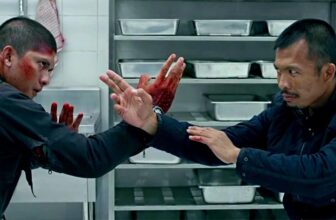
Martial arts practices are part of many a nation’s cultural and national identity. Whilst some have enjoyed international recognition, such as Muay Thai, many others struggle and are even battling for survival.
The intertwining of culture and identity is so strong that to lose one invariably affects the other, and so it is vital that traditional systems such as the Cambodian art of Bokator – as featured in our review of “Surviving Bokator” – are preserved. This is where the United Nations come to the rescue.
Through the UN’s agency UNESCO (United Nations Educational Scientific and Cultural Organization), a lifeline is available to safeguard a country’s inherent cultural martial arts. The organization plays a major role in the protection of martial arts on the verge of extinction.
Having a traditional fighting system recognized as an ‘Intangible Cultural Heritage’ (ICH) by UNESCO ensures its survival and continued practice. So just how does UNESCO safeguard the culture and rituals of traditional martial arts? Let’s take a look at 5 martial arts systems and traditions inscribed on UNESCO’s list as an Intangible Cultural Heritage!
What is UNESCO ICH?
Established in 1947 after the second world war, UNESCO was created as a replacement for the former League of Nations’ International Committee on Intellectual Cooperation.
That organization’s role was to foster international exchange between scientists, researchers, teachers, artists and intellectuals with the goal of international cooperation. Some of its members included renowned scientists Albert Einstein and Marie Curie.
Inheriting the committee’s mantle, UNESCO was mandated in the wake of the second world war to advance the cause of peace through collaboration and dialogue among the nations. Among the five areas which include education, sciences, and communication, cultural preservation is key.
UNESCO also helps establish and secure World Heritage Sites that are of cultural and natural significance. Such landmarks include Yellowstone National Park, The Galapagos Islands, and even Sydney Opera House. They also work to protect practices and traditions successfully deemed an Intangible Cultural Heritage (ICH).
Nations can apply to UNESCO for logistical and financial support through successful listing of cultural practices as an ICH. Many martial arts systems have benefited from UNESCO’s safeguarding to keep these traditions alive.
The Benefit of Martial Arts Enlisting Under UNESCO
When a cultural practice is successfully listed it leads to greater awareness. This in turn provides a high level of protection and conservation given to tangible and intangible heritage properties. This is particularly true for traditional martial arts practices believed to have been lost or on the verge of extinction.
Applications are submitted through an intergovernmental committee responsible for a discretionary grant supported by the Intangible Cultural Heritage. Successful applications and recognition result in the practice being enlisted as a protected cultural practice. This in turn releases vital support to ensure the practice is promoted and continued not just in the host country but around the world.
Support comes in the form of logistical aid such as facilities, expertise, and training, but also from an influx of necessary funding. With these funds, the martial art that gains international recognition as a protected culture, can continue to thrive and be preserved for future generations.
Five Martial Arts Listed by UNESCO as an Intangible Cultural Heritage
There are around ten martial arts systems that have been inscribed or listed as a UNESCO Intangible Cultural Heritage with many more waiting in the wings from all over the world. They encompass historical traditions and rituals at risk of decline through cultural decline, changes in political climate, wars and revolutions, and the adaptations of modern practice.
1. Taekkyeon

Grace of Taekkyeon
Generally considered to be the predecessor to Korea’s national sport Taekwondo, Taekkyeon is the first martial art system to be listed as an Intangible Cultural Heritage by UNESCO.
Like its successor, the fighting form Taekkyeon is characterized by fast, and fluid kicking techniques but also hand strikes, defensive techniques and submissions – on closer inspection it bears similarities to Hapkido, Tai Chi and Chinese Kung Fu.
Like Cambodia’s fighting art, Bokator, Taekkyeon risked extinction having almost been wiped out during the Japanese occupation from 1910-1945.
After the Korean War ended in 1953, Taekkyeon was rediscovered and is considered the oldest martial art discipline in Korea.
Today it is seen as a living link into the country’s history providing historical references for Taekwondo when that system took over as Korea’s national sport.
Taekkyeon however remains a vital part of Korean culture and was enlisted in 2011.
2. Capoeira

Capoeria enjoys UNESCO protection
Over the last few decades, Brazil has seen its profile as an epicenter of martial arts innovation rise with the advent of Gracie Jiu Jitsu.
Alongside the international spread of the Gracie fighting system was another martial art steeped in Brazil’s colonial history, Capoeira. Capoeira is thought to have dated back to the 16th century and rooted in Angolan fighting traditions. It is recorded as being the fighting style of choice for the country’s slaves, and proved to be so dangerous to the establishment that it was criminalized even after the abolition of slavery.
Capoeira is a fighting system that’s instantly recognizable not only by its agile acrobatic style and almost dance-like movements – not to mention its signature inverted kicks – but the music and songs too are an integral part of the art. Its musical and dance traditions along with its cultural ties to Brazil’s history are why in 2014, Capoeira was granted protected status by UNESCO.
3. Pencak Silat

Traditions of Silat
Ten years ago, a small Indonesian action film directed by Welshman, Gareth Evans, and with a largely unknown cast exploded onto the international cinema scene and blew audiences’ minds.
“The Raid: Redemption” released in 2012 not only made big stars of its principal cast Iko Uwais, Yayan Ruhian, and Joe Taslim, but also introduced the world to the intricate and deadly Indonesian martial art of Pencak Silat.
Little is known of this ancient fighting system which is thought to date back thousands of years, and some of its knowledge is thought to be lost due to its reliance on oral traditions.
In 2019, Silat was inscribed onto UNESCO’s list to protect and promote its traditions that include oral traditions and expressions such as greetings, philosophical phrases, rhymed poems, advice, as well as songs and techniques to play the instruments.
4. Chinese (Peking) Opera

Peking Opera in action
This entry on our list might stand out to some of you since Peking Opera is a performance art, reciting a story through action, music, and dance. Yet the link to the martial arts, in particular Kung Fu, is so strong, and influential that its inscription into UNESCO’s list as an Intangible Cultural Heritage deserves a clear mention.
For many serious martial artists, and kung fu movie fans, Peking Opera gave rise to the action silver screen’s biggest action stars. Most notably the famous China Drama Academy in Hong Kong where Jackie Chan, Yuen Biao, and Sammo Hung learned their trade. The rest as they say is history, and along with their fellow members of the Seven Little Fortunes that included Corey Yuen and Yuen Wah, changed the face of action cinema as we know it.
Peking Opera features a great deal of martial arts in their stories and many of its performers have trained from a very young age. For centuries, with shows packed full of storytelling, music, acrobatics, martial arts, and dance, Peking Opera entertained the masses in both urban and rural regions of China.
The stories reflected the politics, culture, societal norms, and daily lives of the time in which they were performed. The two main threats to Peking Opera were increasing modernization and the cultural revolution of the 20th century.
Sadly Peking Opera is no longer a part of everyday culture, with the 350 plus regional forms in decline, and only 162 forms recorded. It was inscribed by UNESCO in 2010 as an Intangible Cultural Heritage.
5. Pahlevani and Zourkhaneh Rituals (Iranian / Persian Wrestling)

Pahlevani and Zourkhaneh Persian Wrestling
Iran has a rich history in martial arts culture and development. It is the home of the Kan-Zen-Kai Karate-Do Organization – founded by Farhad Varasteh, my former Sensei – and has earned numerous medals in international competition including the Olympic Games.
Yet, it is in wrestling where the country excels which should not be surprising since Iranian culture is rooted in grappling combat that dates back to the Achaemenid Empire, also known as the Persian Empire.
The traditions of Pahlevani and Zourkhaneh were thought to have been used to train Persian warriors in hand-to-hand combat. It remains a tradition that combines athletics, callisthenics, strength training, music, prayer and martial arts, mainly the grappling system of Koshti Pahlevani.
Training would take place in a traditional domed gymnasium known as the Zourkhaneh, adorned with religious symbols and an octagonal shaped arena. Prayers and recitations would open the proceedings followed by an assortment of conditioning training using traditional equipment that include giant wooden clubs known as meels.
It was almost discouraged from practice following the revolution of 1979, but was quickly restored as a means to bolster cultural and national pride.
As well as physical training Pahlevani embodies all aspects of Iranian pre and post Islamic spirituality that includes Islam, Zoroastrianism, and Gnosticism. It is no surprise to learn then that of the 70-plus medals won in the Olympic Games by Iran over the decades, 47 were actually won in Wrestling.
To protect these ancient traditions, Pahlevani and Zourkhaneh was inscribed in 2010 as a UNESCO Intangible Cultural Heritage.
Many more fighting systems and cultural practices wait in the wings to learn whether they will be inscribed on the coveted UNSECO list.
At the time of researching this article we were awaiting the outcome of UNESCO’s decision regarding the status of the Cambodian fighting system, Bokator. We are delighted to say that it has since been inscribed as an Intangible Cultural Heritage!
This lifeline could potentially preserve centuries’ old traditions rooted in a country’s culture ensuring its survival for the generations to come, and we hope, lead the way for many more…






